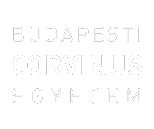Ronyai, Gábor (2020) Consumer attachment to sports relics. BA/BSc szakdolgozat, BCE, International Study Programs. Szabadon elérhető változat / Unrestricted version: http://publikaciok.lib.uni-corvinus.hu/publikus/szd/Ronyai_Gabor.pdf
|
PDF
- Requires a PDF viewer such as GSview, Xpdf or Adobe Acrobat Reader
1MB |
Szabadon elérhető változat: http://publikaciok.lib.uni-corvinus.hu/publikus/szd/Ronyai_Gabor.pdf
Absztrakt (kivonat)
The goal of my Thesis work, was to examine what influencing factors are at play for passive sports consumers – fanatics, to become more and more deeply involved with their favorite sport object and how the depth and level of involvement can be expressed in commercial terms. As such, in order to further highlight the importance of the topic, David A. Aaker’s brand equity model will be briefly covered. The theoretical backbone of the paper will be the critically acclaimed sports consumer segmentation of D. C. Funk and J. D. James, the Psychological Continuum Model framework from 2001 and the revised edition of the Psychological Continuum model from 2006. The PCM framework was created with the intention to provide a reliable tool for the segmentation of both active sports participants and passive sports consumers, however, the bulk of previous research using the PCM framework involved the former group and only in the minority of cases the latter, despite the fact, that previous researches have proven the applicability and validity of the PCM framework in the case of passive sports consumers as well, most notably, by Doyle, Kunkel and Funk, published in the International Journal of Sports Marketing & Sponsorship in 2013. Inspired by this article, I decided to conduct a further applied research on passive sports consumer, this time on the Hungarian market, to further support the validity of the PCM framework. The theoretical background provided by Funk and James have been translated to practice with the help of an online questionnaire, that targeted Hungarian passive sports consumers – fanatics of soccer both on the domestic and international stages, supporters of the NBA as well as enthusiasts of the Formula-1 World Championship. The goal of the survey, was to involve as broad of an audience as possible, in doing so, the influence of involvement in commercial terms have been restricted to the purchasing habits of team branded sports merchandise – in other words, sports relics, as with such a diverse group, with international sports leagues and teams also marked as favorite sports objects, measuring other spending habits, such as game attendance, would have painted an inaccurate picture. The first part of the survey entailed a series of questions, in order to, with the help and guidelines of the PCM framework, accurately segment each participant of the survey to the appropriate floor or outcome level of their involvement with their favorite sports object. Based on their answers to these questions, each respondent was evaluated and assigned their appropriate floor or outcome level in accordance with the PCM framework. Despite the fact, that skipping questions or giving indifferent answers was allowed in the survey – these would later on be taken into account and should the respondent have failed to reply in essence to one-third of the questions, their surveys would not be considered later on in the analysis of the survey results – a rather high amount of valid survey samples (175) was produced. The second part of the survey included practical questions related to the participants’ purchasing habits of sports relics: how much do the participants annually spend on sports relics (based on the participants’ approximation expressed in Hungarian Forints), how frequently do they replace their sports relics and what different kinds of sports relics have they purchased. These replies cross referenced with the scores and segmentation from the previous part have been used to prove or disprove the paper’s three hypotheses: Hypothesis 1: As an individual progresses through the floors and levels of the PCM framework, there will be a noticeable increasing tendency on the annual monetary expenditure on sports relics. Hypothesis 2: As individuals progress through the floors and levels of the PCM framework, there will be a noticeable increasing tendency on the frequency at which individuals replace their sports relics. Hypothesis 3: As an individual progresses through the floors and levels of the PCM framework, there will be a noticeable increasing tendency on the variety and range of sports relics the individual has purchased. All three hypotheses have been proven correct, displaying a positive correlation between the involvement levels of passive sports consumers and their purchasing habits – in simplistic terms, the more involved an individual is with their favorite sports object, the more likely they are to spend money on branded sports merchandise. Overall, the PCM framework has proven to be a reliable and useful tool in the case of Hungarian passive sports consumers as well.
| Tétel típus: | BA/BSc szakdolgozat |
|---|---|
| Témakör: | Marketing Kultúra, közművelődés, sport |
| Azonosító kód: | 13993 |
| Képzés/szak: | Economist in International Business |
| Elhelyezés dátuma: | 06 Okt 2021 11:59 |
| Utolsó változtatás: | 02 Dec 2021 11:48 |
Csak a repozitórium munkatársainak: tétel módosító lap

